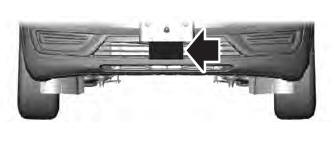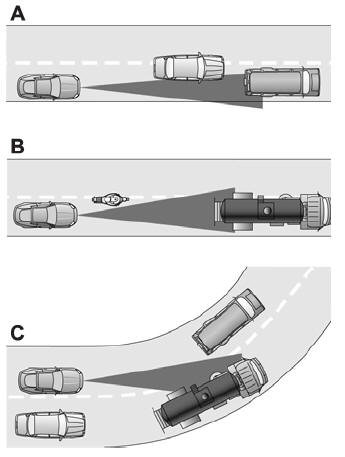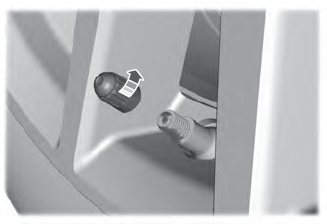Lincoln Corsair: Adaptive Cruise Control / Adaptive Cruise Control Limitations
Vehicles With: Adaptive Cruise Control With Lane Centering
Adaptive cruise control limitations apply to lane centering unless stated otherwise or contradicted by a lane centering limitation.
The system may not correctly operate in any of the following conditions:
- Your vehicle is not centered in the lane.
- The lane is too narrow or wide.
- The system does not detect at least one lane marking or when lanes merge or split.
- You switch the direction indicator on.
- Limited steering torque input is applied.
- Areas under construction or new infrastructure.
- When modifications to the steering system have been made.
- When using a spare tire.
Note: The driving assistance torque is limited and may not be sufficient for all driving situations such as driving through tight curves or driving through curves at high speeds.
Note: In exceptional conditions, the system may deviate from the center line.
Vehicles With: Adaptive Cruise Control With Stop and Go
Sensor Limitations
WARNING: On rare occasions, detection issues can occur due to the road infrastructures, for example bridges, tunnels and safety barriers. In these cases, the system may brake late or unexpectedly. At all times, you are responsible for controlling your vehicle, supervising the system and intervening, if required.
WARNING: If the system malfunctions, have your vehicle checked as soon as possible.
WARNING: Large contrasts in outside lighting can limit sensor performance.
WARNING: The system only warns of vehicles detected by the radar sensor. In some cases there may be no warning or a delayed warning. Apply the brakes when necessary. Failure to follow this instruction could result in personal injury or death.
WARNING: The system may not detect stationary or slow moving vehicles below 6 mph (10 km/h).
WARNING: The system does not detect pedestrians or objects in the road.
WARNING: The system does not detect oncoming vehicles in the same lane.
WARNING: The system may not operate properly if the sensor is blocked. Keep the windshield free from obstruction.
WARNING: The sensor may incorrectly track lane markings as other structures or objects. This can result in a false or missed warning.

The camera is mounted on the windshield behind the interior mirror.

The radar sensor is in the lower grille.
Note: You cannot see the sensor. It is behind a fascia panel.
Note: Keep the front of your vehicle free of dirt, metal badges or objects. Vehicle front protectors, aftermarket lights, additional paint or plastic coatings could also degrade sensor performance.
A message displays if something obstructs the camera or the sensor. When something blocks the sensor, the system cannot detect a vehicle ahead and does not function.
The radar sensor has a limited field of view. It may not detect vehicles at all or detect a vehicle later than expected in some situations. The lead vehicle image does not illuminate if the system does not detect a vehicle in front of you.
Detection issues can occur:

- When driving on a different line than the vehicle in front.
- With vehicles that edge into your lane. The system can only detect these vehicles once they move fully into your lane.
- There may be issues with the detection of vehicles in front when driving into and coming out of a bend or curve in the road.
In these cases, the system may brake late or unexpectedly.
If something hits the front end of your vehicle or damage occurs, the radar-sensing zone may change. This could cause missed or false vehicle detection.
Optimal system performance requires a clear view of the road by the windshield-mounted camera.
Optimal performance may not occur if:
- The camera is blocked.
- There is poor visibility or lighting conditions.
- There are bad weather conditions.
 Adaptive Cruise Control Precautions
Adaptive Cruise Control Precautions
Vehicles With: Adaptive Cruise Control With Lane Centering
Adaptive cruise control precautions apply to
lane centering unless stated otherwise or
contradicted by a lane centering precaution...
 Switching Adaptive Cruise Control On and Off
Switching Adaptive Cruise Control On and Off
The cruise controls are on the steering
wheel.
Switching Adaptive Cruise Control On
Press the button to set the
system
in standby mode.
The indicator, current gap setting and set
speed appear in the information display...
Other information:
Lincoln Corsair 2020-2025 Service Manual: General Procedures - Hood Alignment
Inspection NOTE: Removal steps in this procedure may contain installation details. Inspect the hood-to-body dimensions. All alignments Open the hood. Remove the hood latch...
Lincoln Corsair 2020-2025 Service Manual: Diagnosis and Testing - Catalyst System
Diagnostic Trouble Code (DTC) Chart Diagnostics in this manual assume a certain skill level and knowledge of Ford-specific diagnostic practices. REFER to: Diagnostic Methods (100-00 General Information, Description and Operation). Module DTC Description Action PCM P0420:00 Catalyst System Efficiency Below Threshold (Bank 1): No Sub Type Information GO to Pinpoint Test HF PC..
Categories
- Manuals Home
- 1st Generation Lincoln Corsair Owners Manual
- 1st Generation Lincoln Corsair Service Manual
- General Procedures - Brake Service Mode Activation and Deactivation
- Programming the Garage Door Opener to Your Garage Door Opener Motor
- Capacities and Specifications - 2.0L
- New on site
- Most important about car
Second Stage: Checking Tire Pressure
WARNING: If the tire does not inflate to the recommended tire pressure within 15 minutes, stop and call roadside assistance.
WARNING: The power plug may get hot after use and should be handled carefully when unplugging.
Check the air pressure of your tires as follows:

